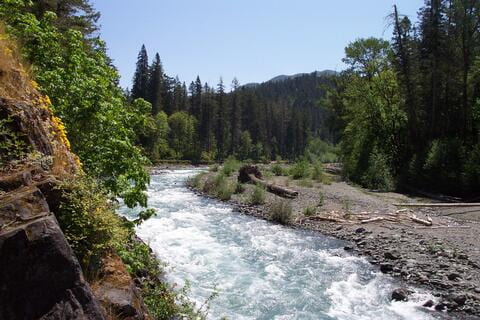To generate hydropower for the town of Port Angeles, Washington, a private energy company built two dams, the Elwha Dam in 1913 and the much larger (205 ft. tall) Glines Canyon Dam in 1927. Neither included a fish passage in its design. The dams blocked ninety percent of the Elwha watershed and reduced salmon populations to about one-tenth of the numbers recorded on the river in 1910.
In 1986, the Lower Elwha Klallum tribe, an indigenous community with legal rights to the river’s fisheries, filed a legal motion to block both dams’ relicensing. Eventually joined by local environmental advocacy groups and supported by the National Park Service, the National Wildlife Service, and other federal agencies, the Lower Elwha Klallum’s effort led to the Elwha River Ecosystem and Fisheries Restoration Act of 1992, the largest dam removal effort, to date, in American history. Negotiations took nearly an additional two decades, but the dam removal officially began in 2011.
Lower Elwha Klallum leaders made their legal case in the Senate hearings that led to the 1992 Removal Act, and part of that testimony included a statement made by a tribal elder named Beatrice Charles who remembered the pre-dam river of her early childhood. Beatrice’s statement is attached here.
As you read Beatrice Charles’s statement, consider these questions: How does Beatrice use memory to critique the dams and make an argument for their removal? What does river “restoration” mean to her?
Citation:
Before the Senate Committee on Energy and Natural Resources, 102nd Cong., 1992, (statement of Beatrice Charles, Tribal Elder, Lower Elwha Klallam Tribe).
Library Item date:
1992
